The interior of the Tube station on the Bakerloo line at Charing Cross station
This part is dedicated to the National Gallery, and the National Portrait Gallery.
Below are enlarged images of the parts of the remote control:
The National Gallery
 Click for a larger image
Click for a larger image Map of Trafalgar Square and the Galleries
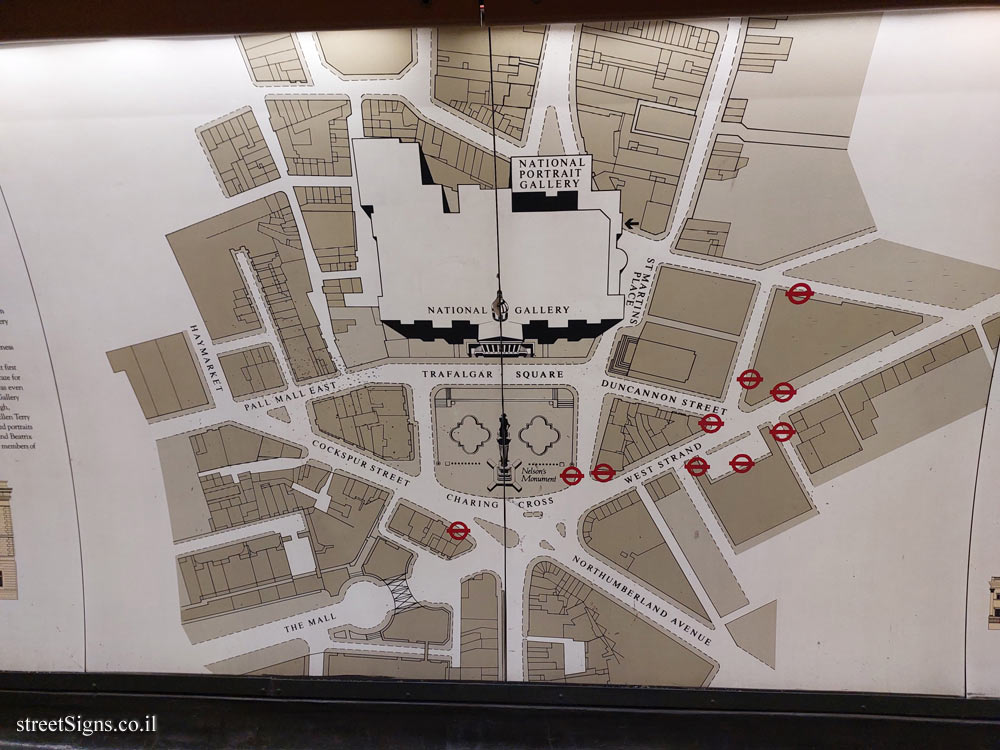 Click for a larger image
Click for a larger image The National Portrait Gallery
 Click for a larger image
Click for a larger image Subway symbol and station name (roundel) -
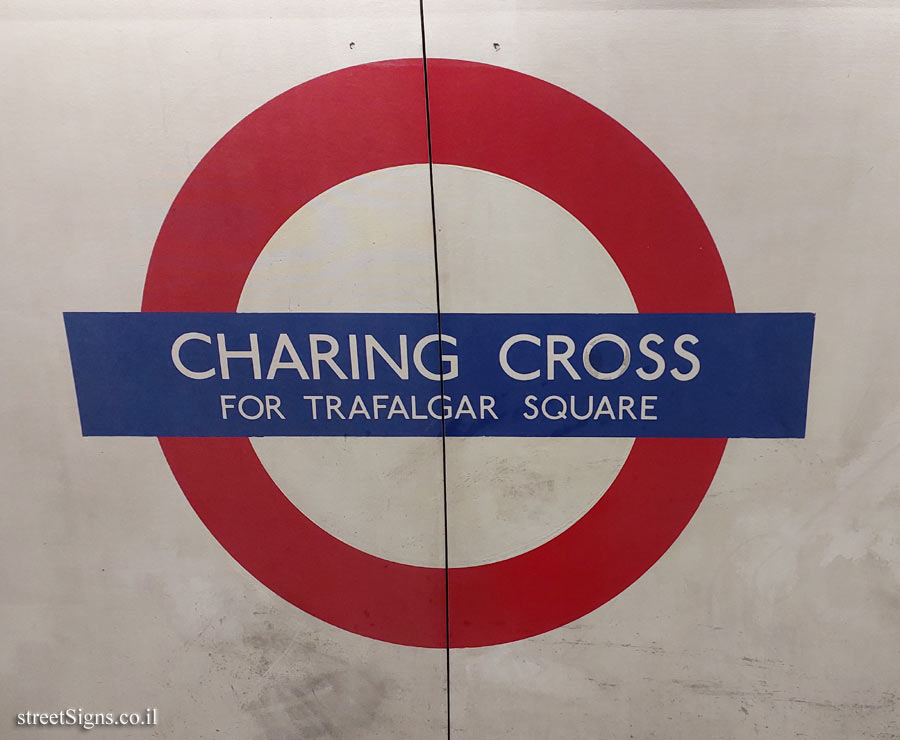 Click for a larger image
Click for a larger image The next three images show portraits from the National Portrait Gallery
Richard III - unknown painter
Henry VII - unknown Dutch painter
Henry V - unknown painter
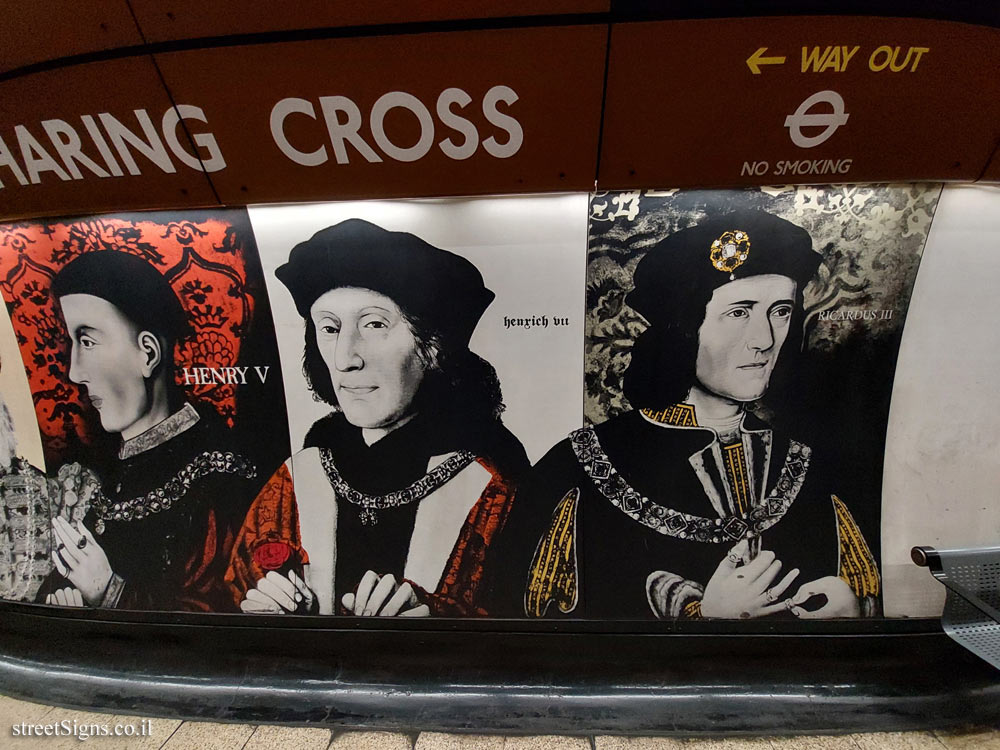 Click for a larger image
Click for a larger image Elizabeth I - unknown painter
Thomas Wolsey - unknown painter
Henry VIII - Hans Holbein the Younger
 Click for a larger image
Click for a larger image Queen Mary - Unknown Painter
Anne Boleyn - unknown painter
Edward IV - unknown English painter
 Click for a larger image
Click for a larger image Drawing of a monkey in chains (unknown)
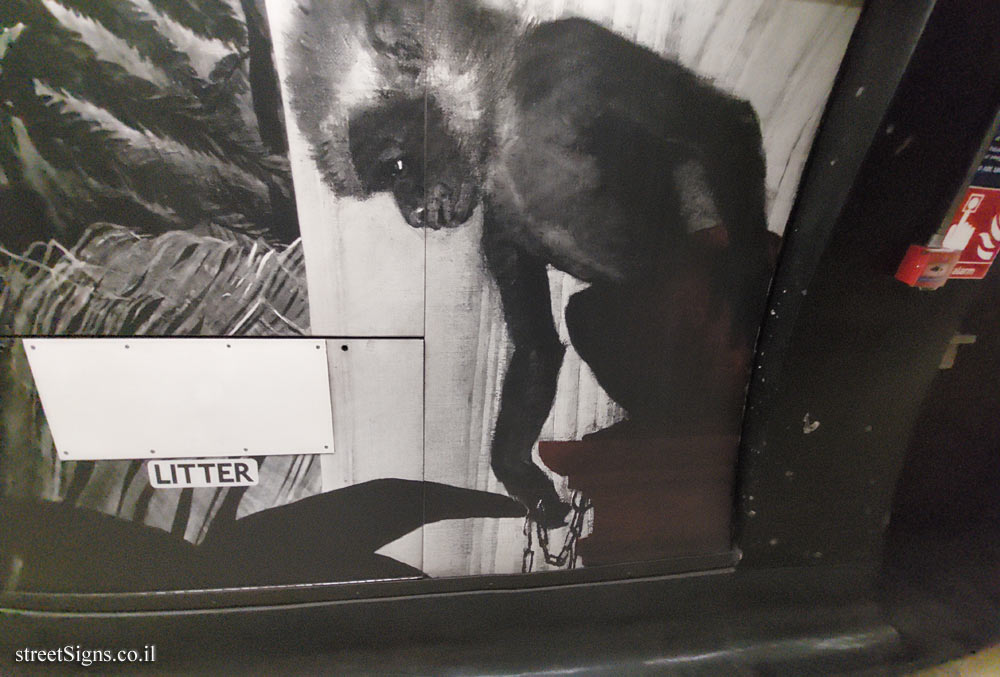 Click for a larger image
Click for a larger image Tiger in a Tropical Storm or Surprised! by Henri Rousseau - from the collection of the National Gallery
 Click for a larger image
Click for a larger image Drawing of The Virgin and Child with Saint Anne and Saint John the Baptist - The Burlington House Cartoon (Modello) - Leonardo da Vinci
 Click for a larger image
Click for a larger image  Click for a larger image
Click for a larger image The Battle of San Romano by Paolo Uccello
 Click for a larger image
Click for a larger image The painting Venus and Mars by Sandro Botticelli in the National Gallery
 Click for a larger image
Click for a larger image Items on Lord Byron Willian Shakespeare Christopher Wren and Lord Nelson, from the National Portrait Gallery
 Click for a larger image
Click for a larger image A portrait of Sir Christopher Wren (from the National Portrait Gallery), and St Paul’s Cathedral which he designed
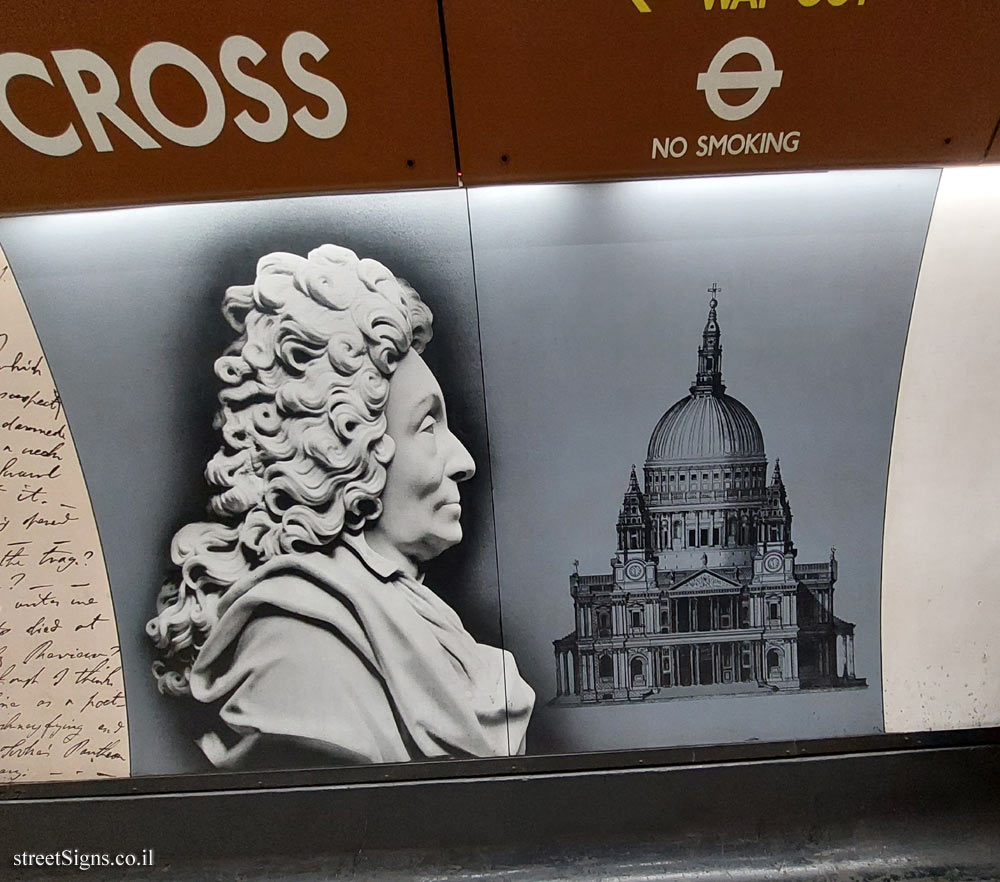 Click for a larger image
Click for a larger image Portrait of Lord Byron by Thomas Phillips (in the National Portrait Gallery), and a letter that Bayron wrote to Percy Bysshe Shelley about Bayron’s daughter Allegra
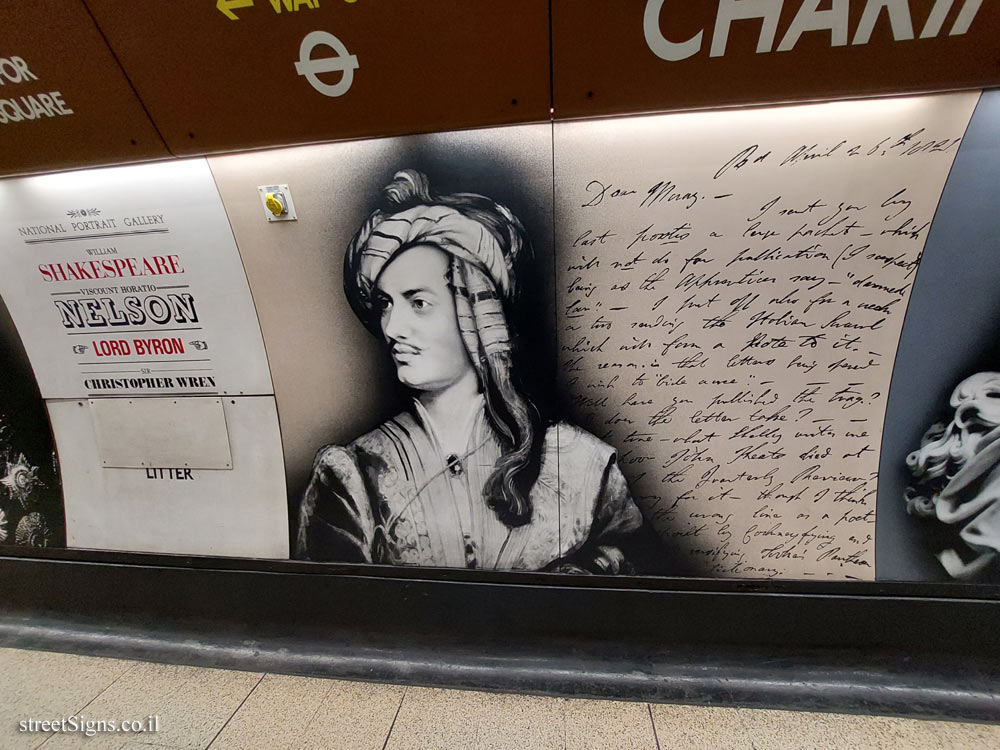 Click for a larger image
Click for a larger image Portrait of Admiral Horatio Nelson by William Beechey (in the National Portrait Gallery), and an illusration of what would be The Times headlines from the day that Nelson died in the battle of Trafalgar
 Click for a larger image
Click for a larger image An engraving of William Shakespeare by Martin Druschout (found in the National Portrait Gallery), and the text written by the poet Ben Jonson on that image
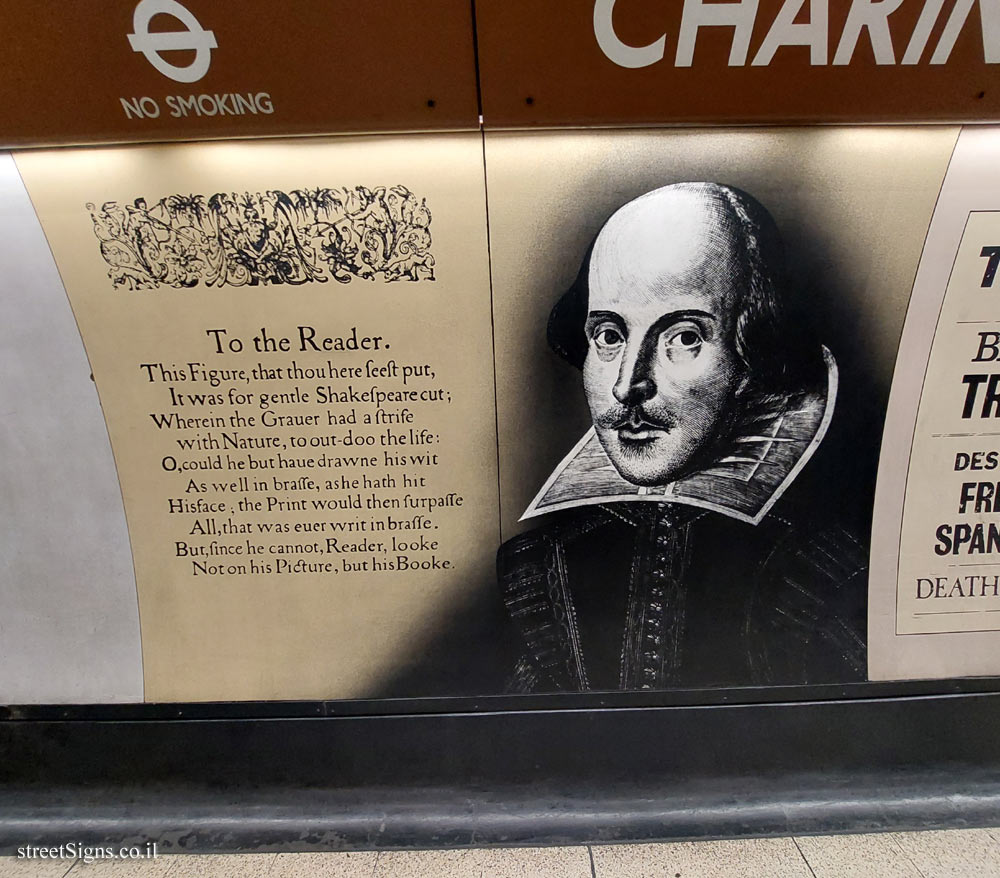 Click for a larger image
Click for a larger image Illustration of the Gunpowder Plot by Crispijn van de Passe (National Portrait Gallery)
A conspiracy in 1605 in which a group of Catholic extremists tried to assassinate King James I of England, his family, and most of the (Protestant) nobility by blowing up the Palace of Westminster
 Click for a larger image
Click for a larger image Juan Pantoja de la Cruz’s Somerset House Conference (National Portrait Gallery) held in 1604 to negotiate an end to the Anglo-Spanish War.
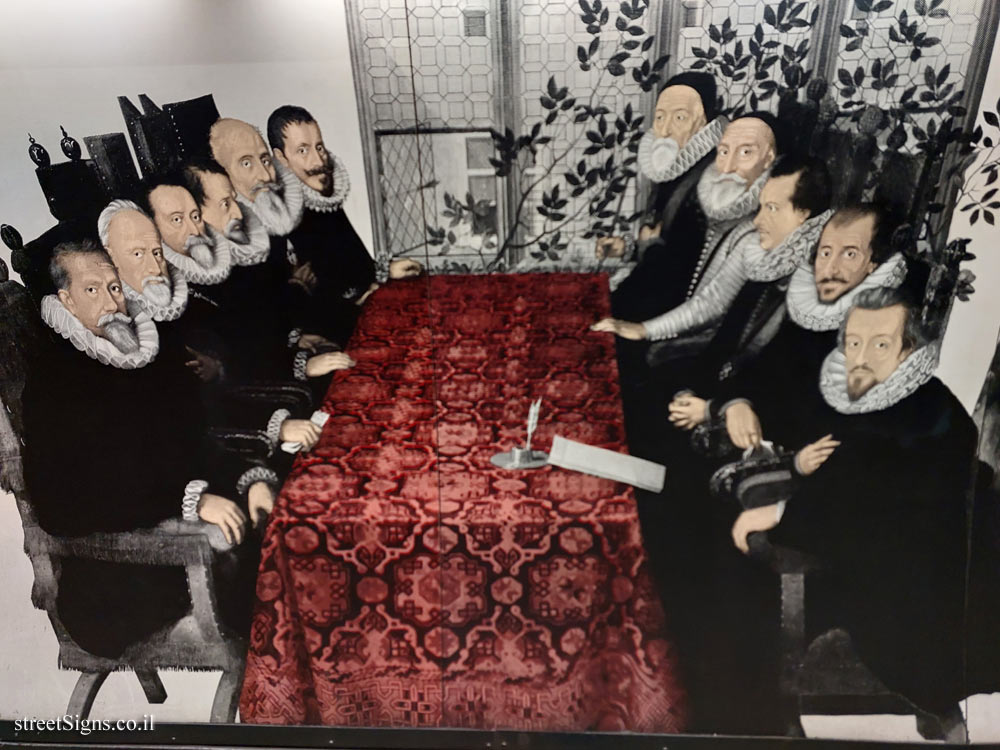 Click for a larger image
Click for a larger image

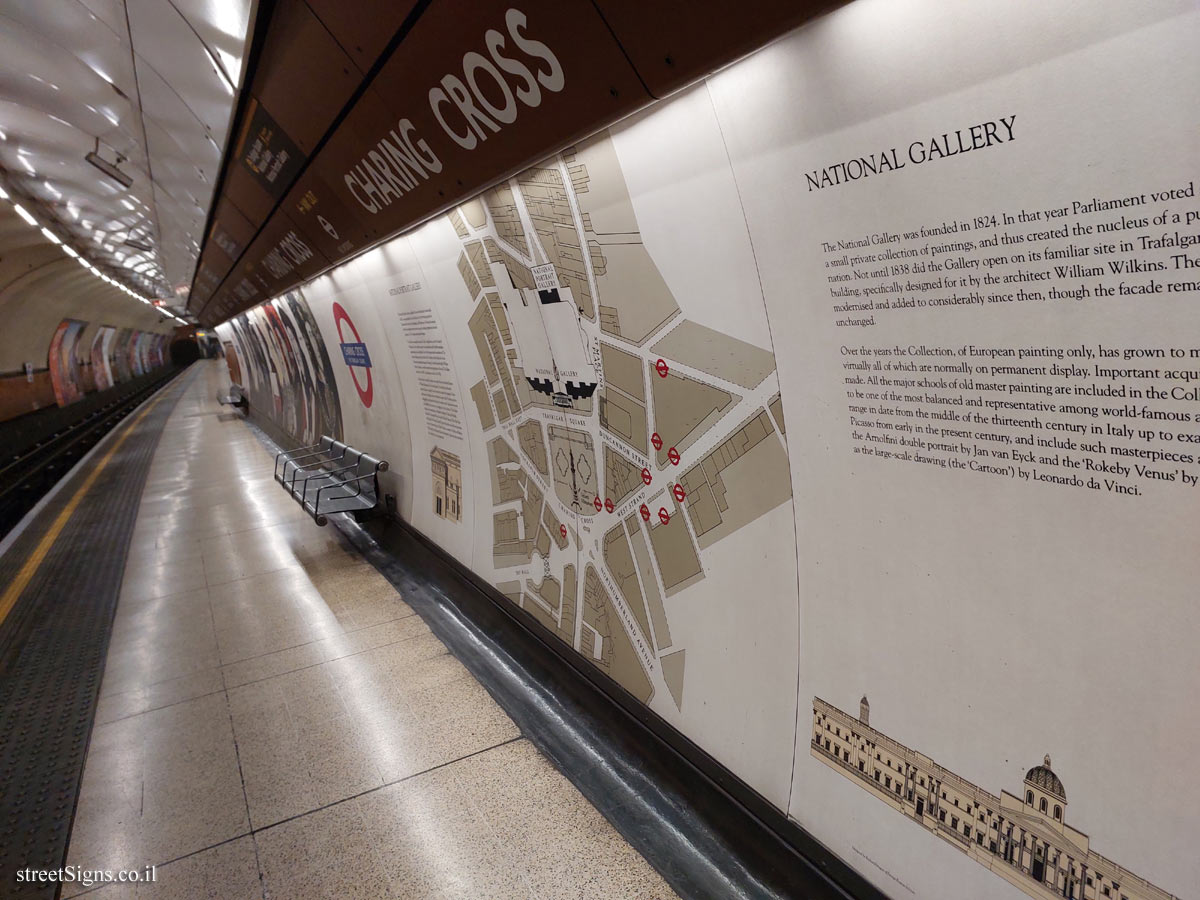

 Click for a larger image
Click for a larger image  Click for a larger image
Click for a larger image  Click for a larger image
Click for a larger image  Click for a larger image
Click for a larger image  Click for a larger image
Click for a larger image  Click for a larger image
Click for a larger image  Click for a larger image
Click for a larger image  Click for a larger image
Click for a larger image  Click for a larger image
Click for a larger image  Click for a larger image
Click for a larger image  Click for a larger image
Click for a larger image  Click for a larger image
Click for a larger image  Click for a larger image
Click for a larger image  Click for a larger image
Click for a larger image  Click for a larger image
Click for a larger image  Click for a larger image
Click for a larger image  Click for a larger image
Click for a larger image  Click for a larger image
Click for a larger image  Click for a larger image
Click for a larger image  Click for a larger image
Click for a larger image  Click for all signs belonging to Interior of subway and railway stations
Click for all signs belonging to Interior of subway and railway stations
 29 Meter |
29 Meter |  29 Meter |
29 Meter |  30 Meter |
30 Meter |  279 Meter |
279 Meter |  293 Meter
293 Meter